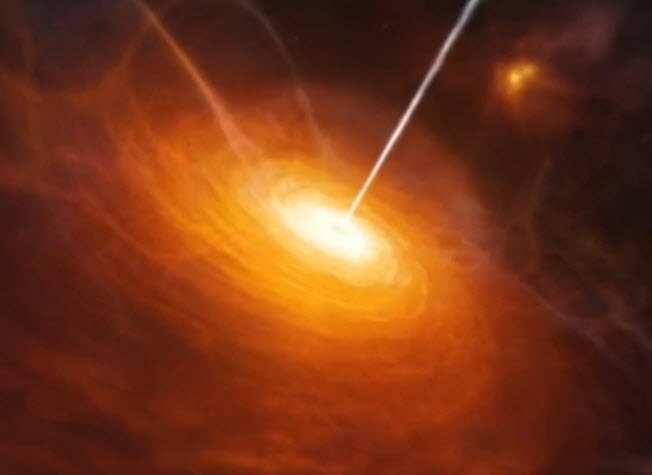Wild ride ahead: glimpse at humanity’s long range future
July 23, 2014 by Richard (Dick) Pelletier

A Type III civilization could harness the energy of an entire galaxy (credit: ESA)
Imagine if you could take an exotic vacation billions of light years from Earth, peek in on the dinosaurs’ first-hand, or jump into a parallel universe where another you is living a more exciting life than yours — and you could swap places if you like.
For years, scientists have bandied about radical ideas that future humans will one day harness wormholes to zip across the universe at faster-than-light speeds to explore vast distances in space, travel through time, and visit other universes.
Now, researchers at the CERN particle accelerator believe their machine can recreate conditions like the “big bang,” which brought time and space into existence, and create baby black holes and wormholes; elements that many believe offer the best chance to validate or dispute the concept of developing faster-than-light travel.
In 1964, astronomer Nikolai Kardashev devised a method to categorize advanced civilizations based on energy consumption. Type-I utilizes all solar energy that strikes its planet, Type-II, controls all energy in its solar system, and Type-III harnesses power from every star in its galaxy. Others have since added Type-IV, which masters the entire energy output of a universe.
Physicists rate today’s humans at Type-0.7. In The Runaway Universe, author Don Goldsmith reminds us that Earth receives only one billionth of the Sun’s energy, and that we utilize just one millionth of that; but with nanotech and strong AI advances expected by mid-century, forward-thinkers predict we could reach Type I by 2100.
The following list estimates the times humanity could reach each new civilization level:
- Type I, 2100. At this level, we will capture all solar energy striking our planet, which will increase today’s energy supply by 100 billion times. Molecular nanotech and warp-drive propulsion will trigger a rush to space and create an affluent, peaceful society where it is no longer viable to waste energy on intra-global conflicts. Say goodbye to crime and wars.
- Type II, 2200. Exponentially advancing technologies could help achieve this level within one century. We will mine all solar energy, increasing power by 100 billion again. We will establish space colonies throughout our solar system and on planets orbiting nearby stars.
- Type III, 3000. We again increase energy supply by 100 billion. In his book, Parallel Worlds, Michio Kaku says Type-III’s will derive power from every star in their galaxy and could learn to control unstable time and space. We will traverse wormholes through vast distances in space and begin time travel excursions. Type-III will join other species in a Star Trek-like federation to “boldly go where no man has gone before.” Move over, Captain Picard.
- Type IV, 12000. Wild dreams are now possible as we approach the ultimate limits of our journey. We control all power in the universe, and can visit our “other selves” in parallel universes; or roam throughout the “multiverse” in a never-ending quest to acquire more intelligence.
Is it possible that this ‘wild ride’ will ever become humanity’s reality?
Achieving this future will mean new ways of living, thinking, loving, and being born. It may mean the end of all these things and the dawn of a new world.
Admittedly, many of these ideas may sound like optimism gone wild, but stay positive. This long-range future may one day become yours to enjoy.
Dick Pelletier passed away Tuesday July 22 at 6:30 pm. He was 83. A prolific, inspiring futurist and writer and KurzweilAI newsletter subscriber, he authored 548 articles focusing on his positive visions of the future on his Immortaltech website and weekly newsletter since Feb. 1, 2004, many of them syndicated to various publications. This visionary article, published July 1, 2014, was his last. He will be missed by many of us. — Amara D. Angelica, Editor, KurzweilAI